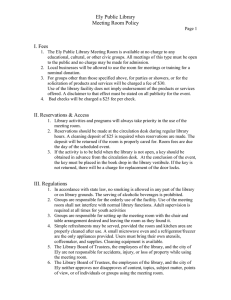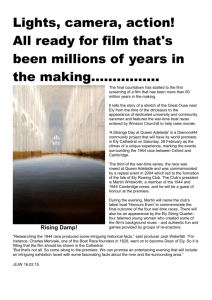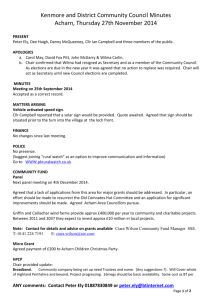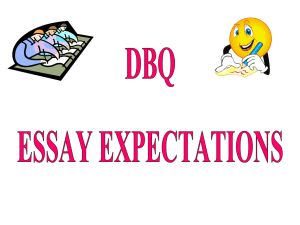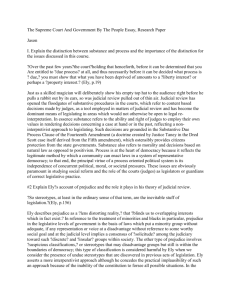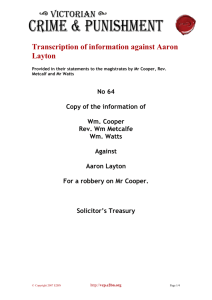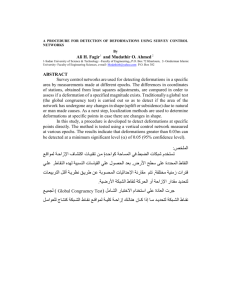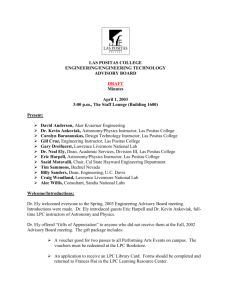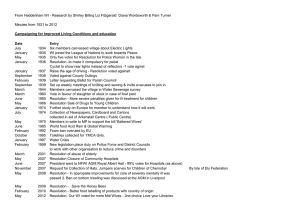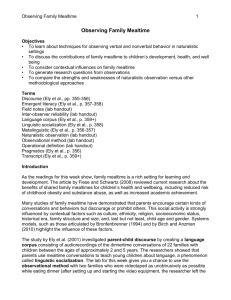Managing Technological Change
advertisement
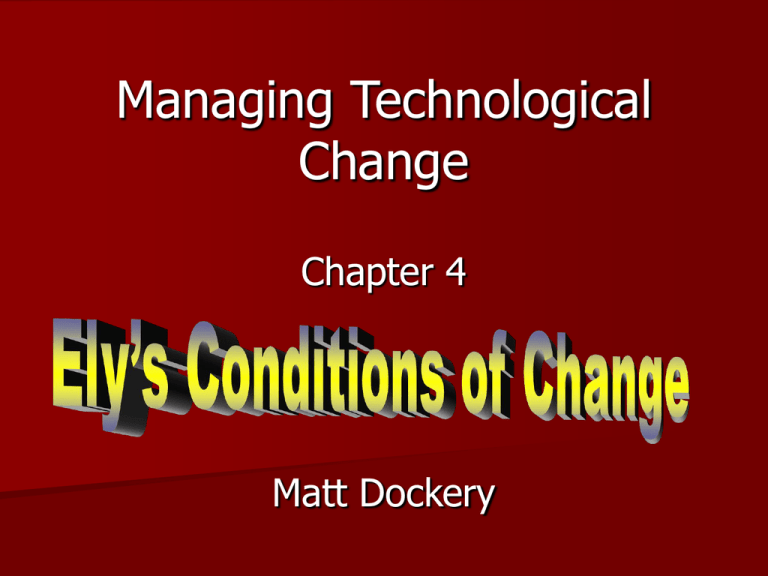
Managing Technological Change Chapter 4 Matt Dockery Introduction Daryl P. Ely was the first to emphasize the environmental conditions that promote change. Broadest and most far reaching study. Pioneering study of change in libraries in 1976. Refined over the years, now includes educational technology. Research suggests the environment for the innovation is equally important in the change success. “The goal is to attain each of these eight conditions during implementation.” The Eight Conditions 1. 2. 3. 4. 5. 6. 7. 8. Dissatisfaction with the Status Quo Knowledge and Skills Exist Resources are Available Time is Available Rewards or Incentives Exist for Participants Participation is Expected and Encouraged Commitment by Those Who are Involved Leadership is Evident Dissatisfaction with the Status Quo “Only person who likes change is a wet baby” Participants must perceive the status quo to be less than comfortable. There are a wide range of possible causes for dissatisfaction. Diagnostic perspective – More than a number, bad textbooks, test scores, who is dissatisfied? Marketing perspective – Understanding dissatisfaction can help innovation. Examples. Knowledge and Skills Exist “People may believe that changes are in order, but without the specific knowledge and skills to bring about change the individual is helpless.” Often overlooked is educational change. Common cause is perceived lack of training. Undertake change to ensure that effective training is provided. Resources are Available “Resources are broadly defined as those tools and other relevant materials that are accessible to assist learner to acquire learning objectives.” Big ticket items – Computers, salaries, training, facilities. Those working on change must make sure resources are available. Time is Available “Implementers must have time to learn, adapt, integrate, and reflect on what they are doing.” Those expected to adopt change need time for developing and redeveloping materials. Some employees may resist change if they believe they will not be compensated for the additional time. Or may refuse to invest time resulting in a poor change. Rewards or Incentives Exist for Participants Regardless of whether the reward is intrinsic or extrinsic, or whether it is seen as the result of the cause of innovation use, it should be there in some form. Tenured teacher may not see the need to change if they produce good test scores, unless there is a linked reward to change. Participation is Expected and Encouraged “This means shared decision making, communication among all parties involved, and representation where individual participation is difficult.” Buy in to the process with time, effort, and ideas contributes to a sense of ownership in the innovation. Recognize leaders, formally and informally. General participation should be expected, failure to make expectations clear lead to neglect of innovations. Commitment by Those Who are Involved “An unqualified go-ahead and vocal support for the innovation by key players and other stakeholders is necessary.” Expectation and Encouragement. All familiar with the “flavor of the month”, the innovation that occurs every few years. Change requires effort. Endorsement at all levels is a must. Leadership is Evident Cognitive impact of leadership may be summed up according to the change framework. Also have affective influences, whether they are official supervisors, role models, mentors, or advisors. They provide individuals with inspiration and encouragement throughout the change process. “Change is a process, not an event.” Other Studies Before Ely, such as the Volume II of the Rand Change Agent Study in 1975, largely ignored organization, structure and motivation. Got people thinking about change. Examples of modified Ely research projects 1. Haryono’s 1990 investigation of higher education improvement programs in Indonesia. 2. Newton’s 1992 study of the implementation of whole language teaching methods. 3. Read in 1993 and Bauder in 1994 incorporated Ely’s conditions into advanced quantitative inquiries. Other Studies - continued Some studies use different labels but derive from Ely’s conditions. Using Ely’s conditions in conjunction with other models may provide fertile ground for future inquiry. In Conclusion Ely pioneered the investigation of environmental condition and their influence on the change process. The phrase “conditions of change” has come to represent this method of inquiry. Research supports both qualitative and quantitative. Review 8 Conditions. Strong/Weak Points Strong Points – Basic Framework, Provides Steps for Change Process, Great Reference. Weak Points – Too general, can be Updated and Changed, how to get from one step to the next. My Reaction These eight conditions are so simple, yet so difficult as well. Each step is a logical progression from one to the next. The hard part is the actual application of each part. Dissatisfaction with the status quo and resources available seem to be the most obvious. There are always unhappy people in a work environment, and the resources may not always be available that automatically shuts the project down. The most obvious is rewards and incentives, I know everyone would like to be compensated! The most important is leadership. Great leadership leads to great innovations in all aspects of life. I feel this is the most important part of Ely’s conditions. Ely came up with a great framework that has been adapted and changed over the years that people have significantly used as a reference. Most change models should refer to this. References Ellsworth, J. B. (2000). Surviving change: A survey of educational change models. Syracuse, NY: ERIC Clearinghouse on Information & Technology Ely, D. P. (1990). Conditions that facilitate the implementation of educational technology innovations. Journal of Research on Computing in Education, 23 (2), 298-305. Ely, D. P. (1999). New perspectives on the implementation of http://www.ericdigests.org/2001-2/survey.html http://www2.gsu.edu/~wwwitr/features/leaders/ely.html (Ely Biography) educational technology innovation.
